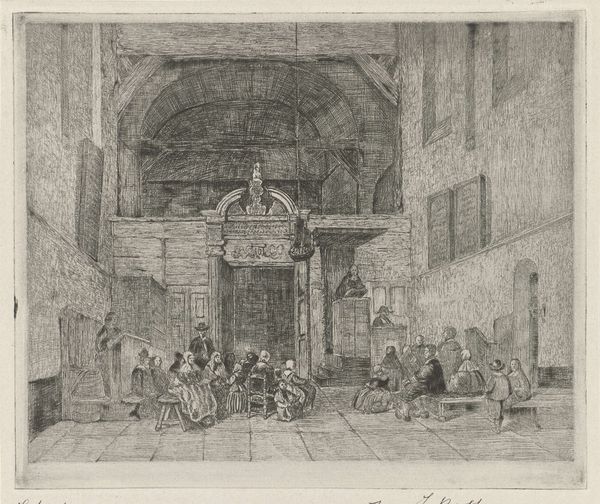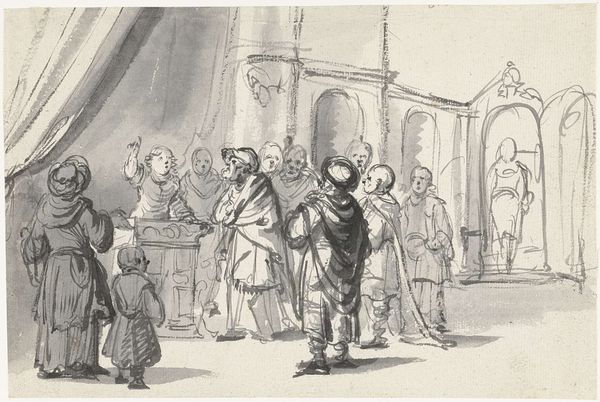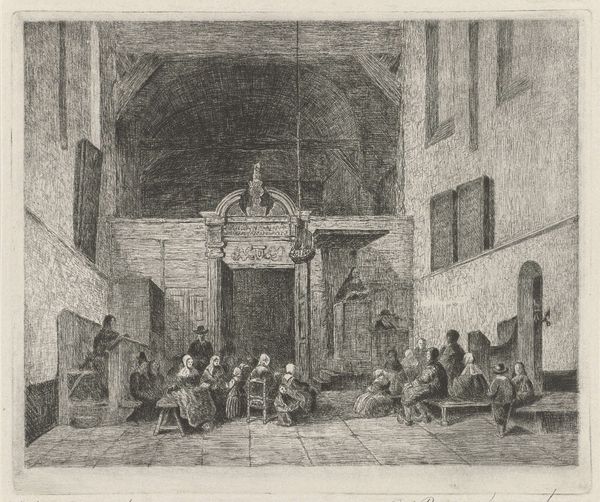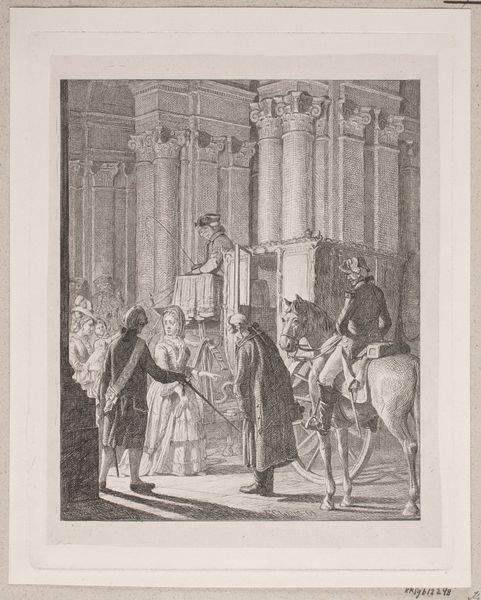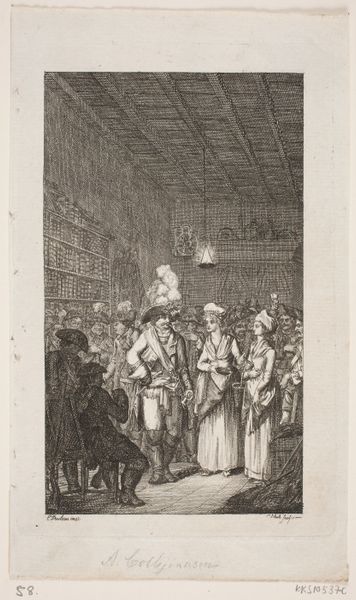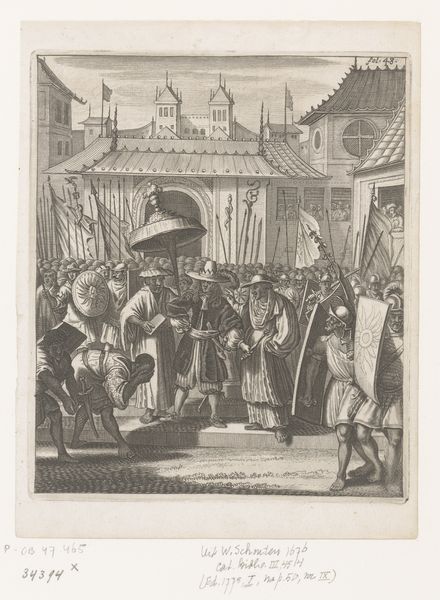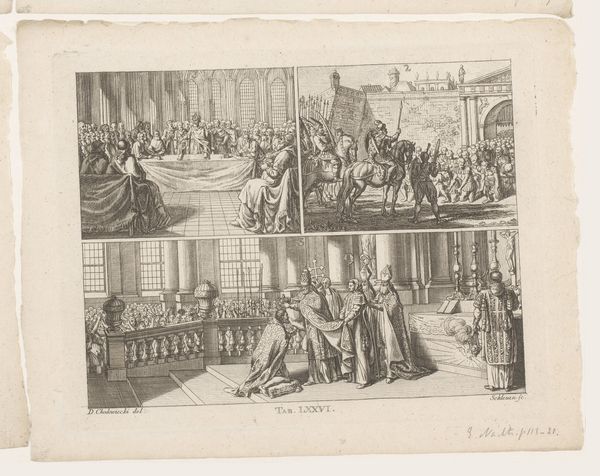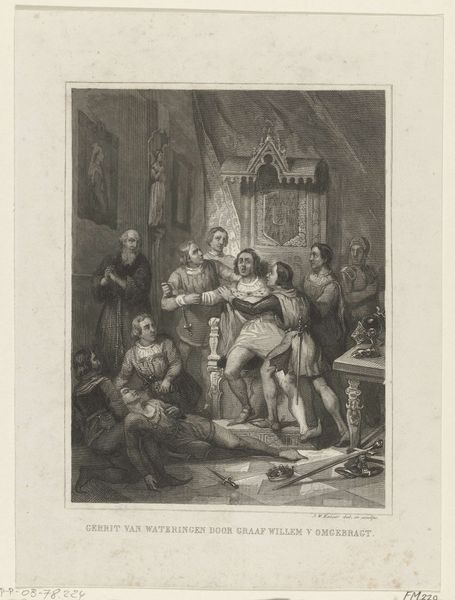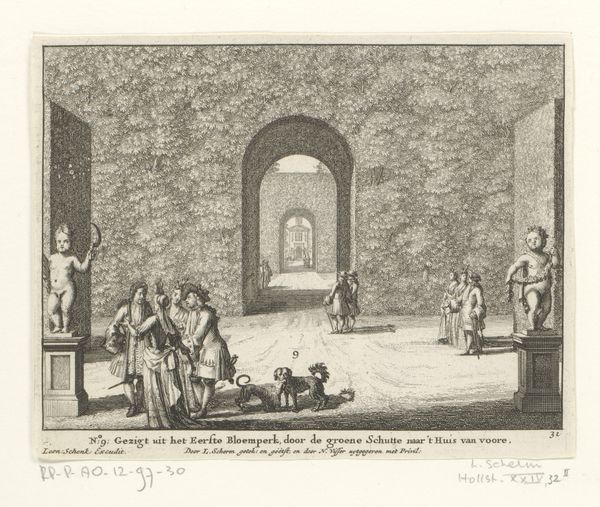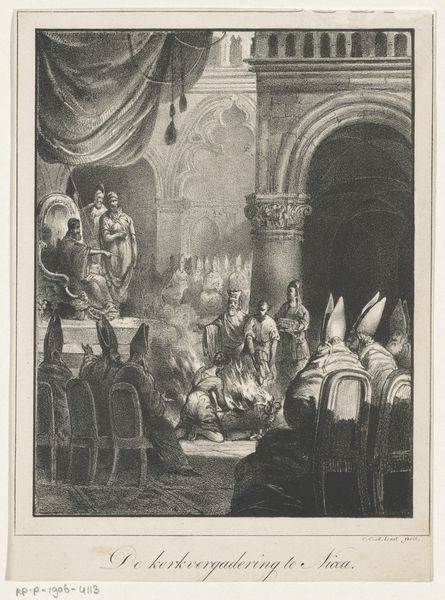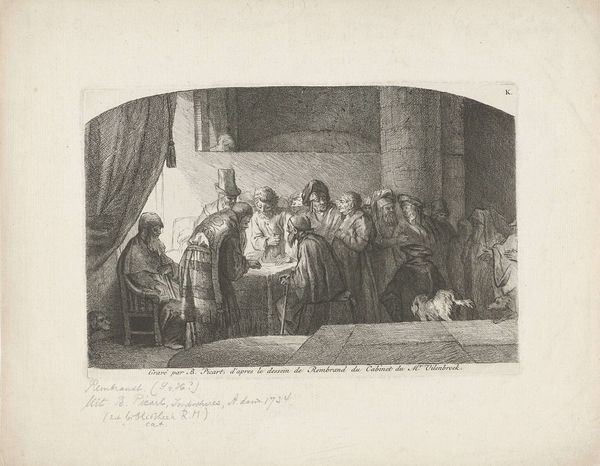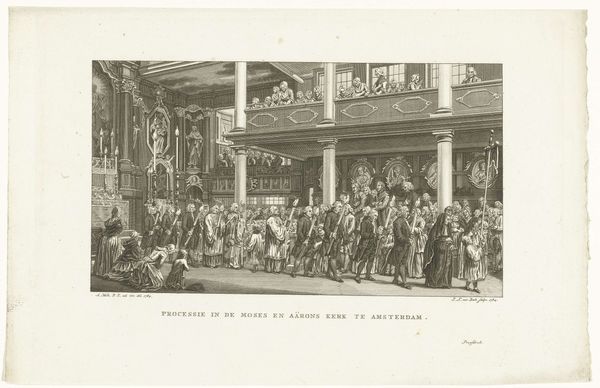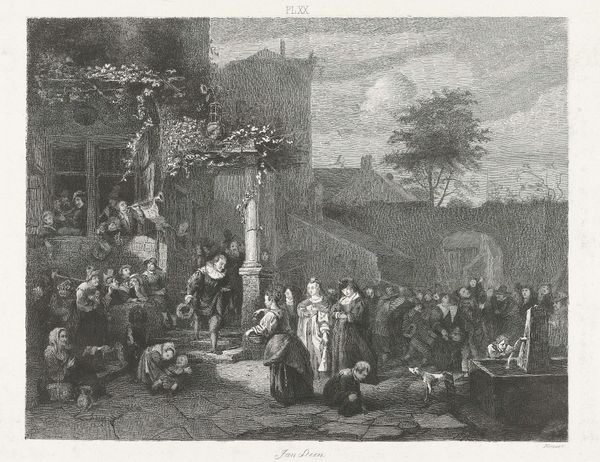
print, engraving
#
16_19th-century
#
narrative-art
# print
#
genre-painting
#
history-painting
#
academic-art
#
engraving
#
realism
Dimensions: 174 mm (height) x 245 mm (width) (plademaal)
Editor: This engraving, "Kansler Niels Kaas' død" from 1864 by F.C. Lund, portrays a very somber scene, with several figures gathered in what appears to be a death chamber. There's an overwhelming feeling of grief in this room. What historical weight do you feel this image carries? Curator: It’s more than just grief; it's about the intersection of power, mortality, and national identity in 19th-century Denmark. Lund, through this scene of Chancellor Niels Kaas's death, is engaging with a pivotal moment in Danish history. Kaas's death marked a shift in political power, and Lund captures this with striking intimacy. Look at how he positions Kaas on his deathbed almost like an altarpiece - How might this resonate with broader discussions about the construction of national narratives and historical memory? Editor: So you're suggesting it’s not just a historical record, but also a commentary? I see the artistic decisions elevating Kaas's position and making the print function like a historical document, perhaps even a kind of propaganda? Curator: Exactly. How does this image perform cultural work? Think about who it was intended for. In the context of the mid-19th century, with rising nationalism, prints like these helped construct and reinforce a sense of shared national identity. It also romanticizes power dynamics, obscuring some socio-political realities. Does that prompt you to reconsider how we consume history? Editor: It definitely does. Thinking about the purpose and the audience changes the reading entirely. I am seeing how one can challenge traditional readings and engage with how it shapes perceptions of history. Curator: Yes, challenging it all is crucial, and seeing those obscured realities is important! Historical art isn’t simply documentation; it’s an active agent in shaping how we understand our past and ourselves. I have a refreshed look too. Editor: Thanks! This was an insightful way to frame the historical importance and cultural impact beyond face value.
Comments
No comments
Be the first to comment and join the conversation on the ultimate creative platform.
